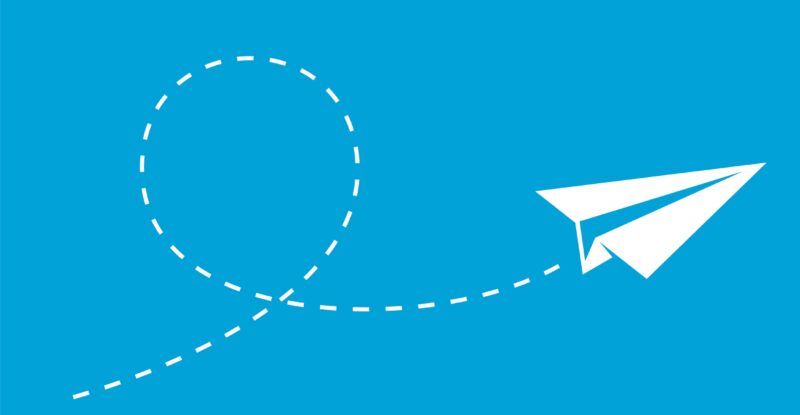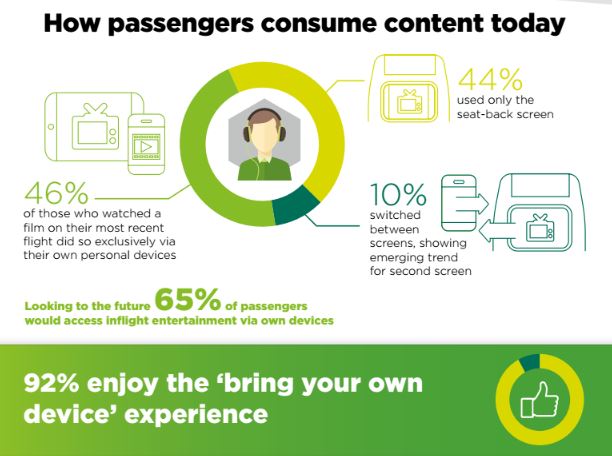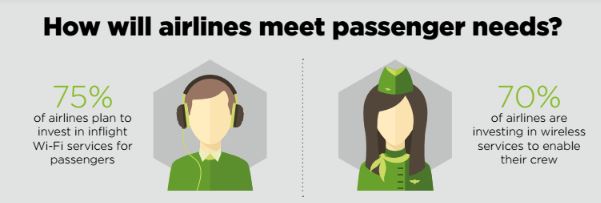This PR Story was written by François Rodriguez, chief strategy and marketing officer at SITAONAIR. The opinions expressed here are those of the firm, and do not necessarily reflect the views of RGN.
New findings from SITA’s annual Passenger IT Trends reveal that passengers are enjoying their inflight entertainment experience, but are more likely to connect through the increasing number of devices they have brought with them.
A trend for a second screen is also emerging, with 10% of passengers who took part in the survey switching between their own devices and seat-back screens during their flights.
And it’s good news for the passenger experience – with 92% of the total passengers polled being positive about their experience with content onboard.
Looking to the future, 65% of passengers would prefer to access entertainment via their own devices – providing a real opportunity for airlines to increase connectivity with passengers via the medium in which they prefer to communicate.
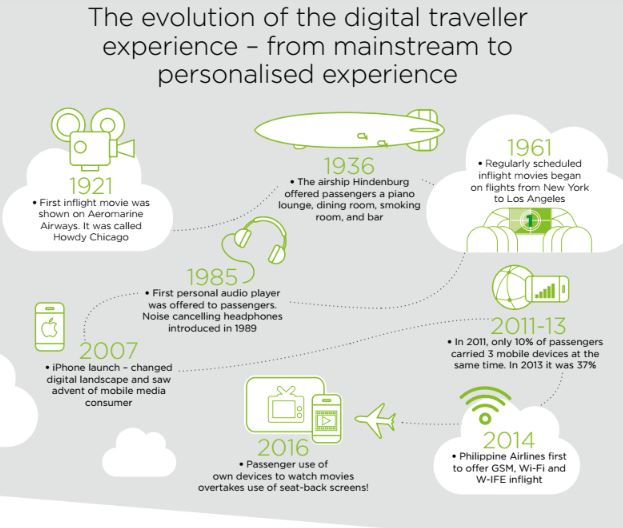 Innovation – what passengers want and what airlines can offer
Innovation – what passengers want and what airlines can offer
Airlines have always looked at ways to keep passengers entertained and engaged during their flights, and have been playing inflight movies for more than 90 years, with the first inflight movie shown on Aeromarine Airways in 1921.
There was an explosion of interest in personal devices with the launch of the iPhone in 2007 – pushing airlines to move forward their inflight connectivity projects – and in 2014 GSM, Wi-Fi and W-IFE inflight were in service on the same flight. Since then, the popularity of BYOD and passenger connectivity has been growing.
Airlines are increasingly aware of the changing needs of the digital traveller – as well as their desire to be constantly connected – and are building this into future investment programmes. 75% are now planning to invest in inflight Wi-Fi services for passengers, and 70% are investing in wireless services to enable their crew.
Unsurprisingly, the survey also revealed that the move to BYOD accompanies a rise in the number of passengers travelling with smartphones. Of those polled, 86% said they take at least one onboard, a rise of more than a third in 12 months.
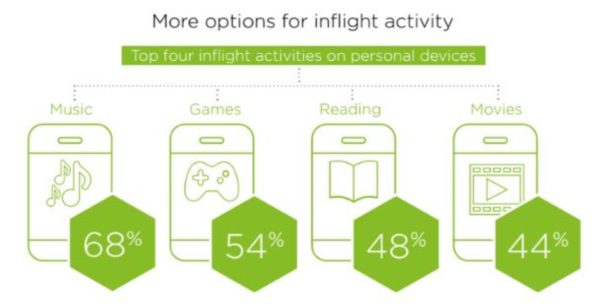 The potential of inflight connectivity
The potential of inflight connectivity
The shift to BYOD is a major game changer for the airline industry. Seat-back screens add both weight and cost to an aircraft fit. Indeed, some national carriers have even begun to remove seat-back screens from some of their fleets.
BYOD also improves the potential for better inflight connectivity and a more tailored passenger experience. Passengers can interact directly with an airline social media team and information can be passed to cabin crew, who can then respond accordingly – whether that be offering a service or solving a problem.
This joined-up thinking also carries through to building brand loyalty through tailored offers made to passengers based on their online behaviour. Passenger safety can also be improved with reports of potential turbulence alerts being sent straight through to personal devices.
This understanding of what will be relevant to a specific passenger at a specific time, will ultimately deliver a more relaxing and enjoyable experience during the flight and build brand loyalty. BYOD is a key enabler, so it’s great to see both its rise and acceptance.
As the digital revolution gains pace, airlines are increasingly digitizing their crew. Once connected, the next phase for airlines is to develop innovative apps and communication channels, such as SITAONAIR’s CrewTab that allow cabin crew with tablets to differentiate the passenger experience, enabling more choice and personal and interactive connections.
The findings were announced by SITA on 25 May 2016 at the annual SITA Air Transport IT Summit.
Data was sourced from passengers across the globe who had flown between November 2015 and February 2016. 9,216 passengers gave answers, with a male:female ratio of 57:43. 1,486 respondents (16.1%) had most recently flown on a low-cost airline, vs 7,331 (79.5%) on a traditional airline and 399 (4.3%) on a charter airline.
Out of 9,216 passengers who took part in the survey, 7,395 had watched TV or film on their most recent flight. Of these, 46% watched exclusively through their own devices, and 44% viewed only on the seat-back screen. The remaining 10% used a combination of both.
Class split was 5,785 (63.3%) economy, 2,300 (25.2%) business, 1,054 (11.5%) first. The modal number of flights per year was 4-5 (2,537, 27.5%) with 1,326 (14.4%) taking 6-10 flights, 1,734 (18.8%) taking 3 and 1,936 (21.0%) taking 2. 34.2% classed themselves as a planner, with just 14.4% classing themselves as hyper-connected.
See SITAONAIR’s full infographic by clicking below.

For more information, please contact:
Aurélie Giles
Corporate communications, SITAONAIR
Tel : +41 (0) 22 747 6360
aurelie.giles@sitaonair.aero
About SITAONAIR
SITAONAIR is the e-Aircraft nose-to-tail solution line, providing the complete range of products and services an airline needs to realize the full potential of the connected aircraft. Its solutions enable airlines to personalize the passenger experience, streamline cabin and cockpit operations, and optimize maintenance procedures.
SITAONAIR looks at the big picture of how digitization is enabling airlines to benefit from connectivity. Its aim is to bring together its six key audiences – passengers, cabin crew, cockpit crew, aircraft data and maintenance, flight operations and air traffic control to transform the passenger experience and revolutionize airline operations.
SITAONAIR was launched on 1 January 2015 as part of the SITA Group. It has nearly 400 airline customers operating over 14,000 aircraft. It is headquartered in Geneva, and has offices in London, Paris, Montreal, Dubai Atlanta and Singapore, with 270 staff worldwide.




